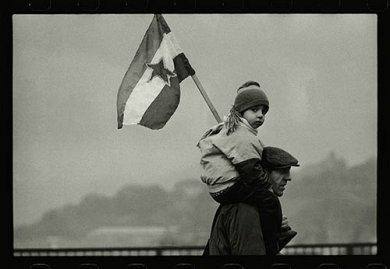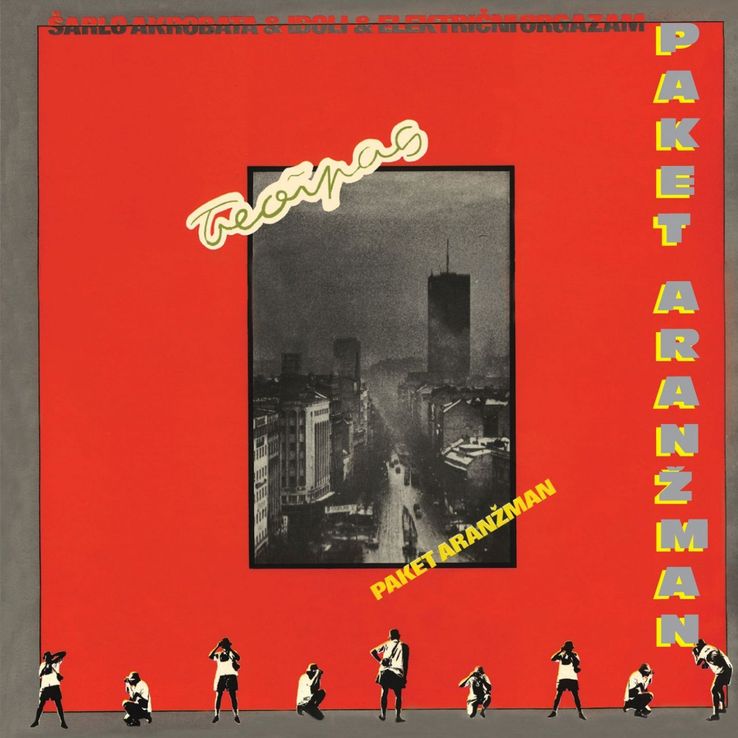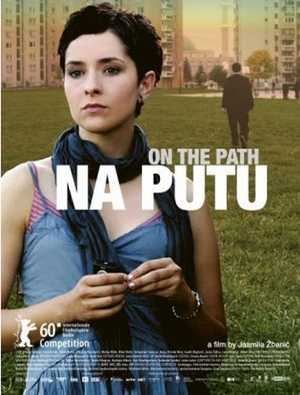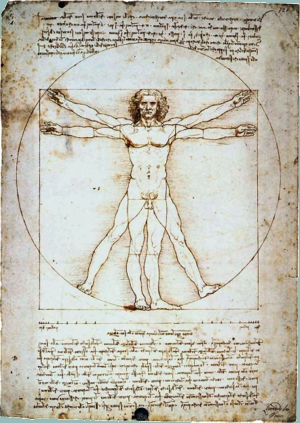Sandra Gajic vient de publier sa thèse sur l’intégration de la Serbie à l’Union européenne, elle est disponible sur le site de la FNAC.
Author: letstalkaboutfrench
Exposition : “IL ÉTAIT UNE FOIS LA YOUGOSLAVIE” photographies : Milomir Kovačević (Galerie Fait et Cause, Paris, du 23.01.2018 au 24.02.2018)

Pour plus d’informations c’est ici !
|
Jugoslavija ! Jugoslavija ! C’est avec ce mot scandé à chaque occasion festive que j’ai grandi dans un pays qui n’existe plus.
Et pourtant, il a bien existé, et pas qu’une fois. D’abord sous la forme d’un Royaume né le 1er décembre 1918. Celui-ci, on l’appelle communément la première Yougoslavie.
La deuxième fois, sous la forme d’une République, fondée en 1943 et tragiquement dissoute en 1992.
Et enfin, une troisième Yougoslavie que l’on disait tronquée, celle qui ne comptait plus que deux républiques sur les six qui la composaient auparavant et qui s’est, elle-même, éteinte en 2006.
Un siècle après, il n’y a donc plus de Yougoslavie. Toutefois, il reste des gens qui y sont nés, qui y ont grandi et vécu une bonne partie de leur vie.
Et je suis de ceux-là.
Je suis de ceux-là, et je suis photographe. Tout ce que j’ai photographié, je l’ai vécu. Je n étais pas qu’un simple témoin des événements qui se déroulaient sous mes yeux ; ces événements étaient ma vie, comme celle de tant d’autres.
J’ai vu la Yougoslavie à son apogée, avec ses pionniers prêtant serment à leur patrie, ses bustes de Tito et son drapeau flottant à toutes les occasions, sa jeunesse en fête dans les concerts et les compétitions sportives, avec sa traditionnelle parade en l’honneur de l’anniversaire de Tito, tous les 25 mai […].
J’ai vu aussi la Yougoslavie avec les yeux de ses prisonniers, dans les tribunes des stades de foot, là où la haine a fini par exploser pour la première fois dans les années 90.
Qu’ai-je vu d’autre ? J’ai vu monter une inquiétude générale, des gens dans la rue brandissant des photos de tel ou tel leader politique, criant à la paix dans un temps de guerre.
J’ai vu le monde s’écrouler pour moi et pour d’autres comme moi. J’ai vu ce pays disparaître, à chaque civil tué, à chaque immeuble touché, à chaque larme versée.
Et puis, quoi ?
Que reste-t-il aujourd’hui de tout cela ?
Les bustes et les statues de Tito gardés hors de la vue, quelque part dans les caves d’un atelier de la province. Tous ces monuments de la Deuxième Guerre mondiale, les mêmes que nous visitions, enfants, avec tant de vénération et de fierté, aujourd’hui abandonnés et profanés.
Que reste-t-il ?
Des parcelles de territoire peuplées de semblables, de mères qui continuent à pleurer leurs fils, de nouvelles générations pour lesquelles la Yougoslavie n’est plus qu’un pays qui n’est plus, celui de leurs parents, de leurs grands-parents.
Il reste, nous, moi, les photos…
Milomir Kovačević
|
Yougoslavie, 1980 : la musique comme étendard

Métronomique (France culture) consacre une émission à la musique yougoslave des années 80. A écouter ici.
“Le 4 mai 1980, le Maréchal Tito s’éteint à Ljubljana. Celui qui avait dit non à Staline en 1948 laisse la fédération socialiste orpheline. Et pourtant, au même moment, la jeunesse yougoslave bouillonne de rythmes et de sonorités venus de l’ouest : punk, new wave, cold wave, rock progressif et même ska, autant de groupes et de styles différents réunis dans ce qu’on appellera la « Novi val », la nouvelle vague yougoslave.
Parmi toutes ces formations, dont la plupart n’ont pas survécu à l’éclatement de la Fédération en 1991, on trouve bien sûr les pionniers de Bijelo Dugme, groupe fondé en 1974 à Sarajevo par Goran Bregovic, Azra et Prljavo kazalište de Zagreb, Pankrti (les « bâtards » de Ljubljana) ou encore VIS Idoli et Ekarterina Velika de Belgrade.”
Nouveau séminaire à l’EHESS : Pour une histoire des mouvements sociaux dans le Sud-Est européen aux XIXe et XXe siècles

Dirigé par Nathalie Clayer et Fabio Giomi
2e et 4e lundis du mois de 16 h à 19 h (salle AS1_23, 54 bd Raspail 75006 Paris), du 8 janvier 2018 au 28 mai 2018
Toutes les informations ici.
Les minarets de Sarajevo sous le vent du Golfe (France Inter – dimanche 14 janvier – 9h00)

De 1992 à 1994 la Bosnie Herzégovine fut la république martyre de l’ex-Yougoslavie. 24 ans après la fin de la guerre, elle doit relever un autre défi : conserver son Islam de tolérance face aux influences radicales portées notamment par les investisseurs saoudiens. Pour plus d’infos, ciquez ici

Sur le même sujet, revoir le très beau Na putu de Jasmila Zbanic (bande-annonce ici)
Balkan Trafic festival this weekend in Paris!
The Transformations of Human and Social Sciences in the (post) Yugoslav Space after 1990

Workshop
May 19 and 20, 2017
EHESS, 96 bd Raspail, room Lombard and 105 bd Raspail, room 13.
Languages: English and French
PROGRAM
Friday 19, May
EHESS, 96 bd Raspail, salle Lombard
During the 1990s the (post) Yugoslav space did not only witness the reinforcement of nationalism, the emergence of violence and the outbreak of war, but also a series of transformations that affected every dimension of the common life that the countries of the former Yugoslavia had shared during most of the previous century. The production and circulation of scientific knowledge was not an exception in this context: universities, research centers and other spaces of critical thought and production of knowledge in the former Yugoslav states, as well as the researchers themselves, were also affected by the redefinitions of territorial frontiers and political, economic and social systems, in addition to the permanent theoretical and methodological renewals that commonly distinguish the scientific field.
In a context characterized by the crisis of Marxist thought and the collapse of the discourse of self-management, as well as the consolidation of the liberal-democratic consensus of the 1990s and the disappearance of Communist regimes in Europe, both the production and transformations of human and social sciences in post-Yugoslav countries must be examined as elements that take part in a wider network of power relations between scientists from the region and the scientific production of the rest of the world, most notably American and Western European science. Particular attention must also be given to the structural transformations that affected the world of universities and the transmission of knowledge in general (the revolution in the means of communication, the setting of European educational and academic programs, processes of professionalization, privatization, development of NGOs, etc.) and the way they interacted with the specific events that affected the (post) Yugoslav space.
From a perspective of critique and reflection, this meeting will gather different generations of researchers, some of whom have been actors and witnesses of these transformations. Working on the particular case of the (post) Yugoslav space, we will attempt to assess the complex relations that exist between knowledge and experience, both individual and collective.
9:00 Reception
9:30-10:00 Introduction
Ivan Čolović, Biblioteka XX Vek, Belgrade
L’espace post-yougoslave : champ de recherche commun en sciences sociales. Témoignages d’un auteur et éditeur / The Post-Yugoslav Space: a Common Research Field in Social Sciences. Account of an Author and a Publisher.
10:00-13:00 Transformations in the Context of the Yugoslav Breakup: “Reflecting on the Crisis, Reflecting During the Crisis”
From Society to Memory: transfers of concepts between the Balkans and Western Europe around 1989. Nenad Stefanov (Institut fûr Geschichteswissenschaften, Humbold Universität, Berlin)
Les apories des sciences sociales en France face à l’éclatement de la Yougoslavie. Quelques éléments pour une approche transnationale / The dilemmas of Social Sciences in France in the Face of the Yugoslav Breakup. Some Elements for a Transnational Approach. Anne Madelain (CERCEC, EHESS-CNRS, Paris)
Between The Man and the System. Sociology in Serbia and Croatia facing the Crisis and Breakup of Yugoslavia. Agustín Cosovschi (CETOBAC, EHESS-CNRS, Paris et UNSAM, Buenos Aires)
Discussion: Wolf Feuerhahn (Centre Alexandre Koyré, EHESS-CNRS, Paris) and Xavier Bougarel (CETOBAC, EHESS-CNRS, Paris).
14:30-17:30 (Re) Building Academic Spaces: Scientific Policies and Networks Between the National and the International
From Self-Analysis to Field Analysis: A Modestly Personal Account of Serbian Sociology’s Post-Socialist Transition. Ivana Spasić, (Department of Sociology, Faculty of Philosophy University of Belgrade)
The Abyss of Interdisciplinarity. Manipulation through Cultural Knowledge in Postsocialist Narratives. Ines Prica (Institute of Ethnology and Folklore Research, Zagreb)
Constructions transnationales du genre après la guerre froide : l’héritage yougoslave comme ressource critique / National Constructions of Gender After the Cold War. The Yugoslav Heritage as a Critical Ressource. Ioana Cîrtocea, (CESSP, EHESS-CNRS, Paris)
Discutants : Jean-Louis Fabiani (CESPRA, EHESS-CNRS, Paris) and Nathalie Clayer, (CETOBAC, EHESS-CNRS, Paris)
Saturday 20, May
EHESS, 105 bd Raspail, salle 13
9h15-12h00 Social Sciences and Society: Roles and Positions Redefined
On the Politics of Anthropology in Serbia : Two case studies followed by a redefinition of concepts. Slobodan Naumović (Department of Sociology, Faculty of Philosophy, University of Belgrade)
Producing Science in Times of (Violent) Societal Unrests: Scholarship on the War-related Belgrade and Zagreb Feminism in the 1990s. Ana Miškovska Kajevska (Department of Polical Science, University of Amsterdam)
Les intellectuels de la Druga Srbija ou l’émergence d’une société civile serbe /The Druga Srbija Intellectuals, or the Rise of a Serbian Civil. Society Laëtitia Delamare (LAIOS, EHESS-CNRS, Paris)
Discussion: Igor Štiks (College of Art, University of Edinburgh)
12h00-13h00 Final Round Table
Study Days – Transformations in Human and Social sciences in (post)Yugoslav aera after 1990

19 and 20 May 2017
EHESS, 96 bd Raspail
Paris
Program soon
Un hommage à Predrag Matvejevic (en français)

Dans l’émission La marche de l’histoire sur France Inter.
Documentary about Yugoslavia on Arte+7 (for one week)

An interesting documentary about Yugoslavian history through the XXe century. Click here!
